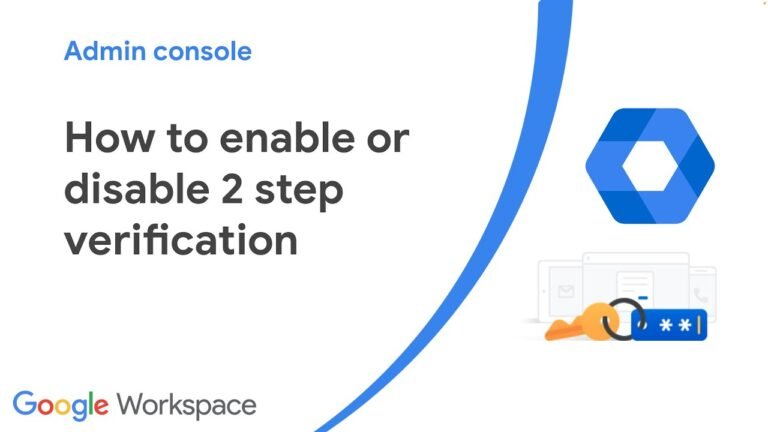Non-Compliant Sign-In Settings: Addressing Your Organization's 2-Step Verification Policy

Is your organization's 2-step verification policy causing issues with your sign-in settings? It's important to ensure that your security measures meet the requirements set by your company. In this article, we'll explore the reasons why your current settings may not be meeting the mark and provide solutions to help you align with your organization's 2-step verification policy. Stay ahead of the game and keep your online accounts secure with these valuable insights.
- Non-compliance with 2-step verification policy
- Security risks associated with inadequate sign-in settings
- Potential consequences for violating organization's security protocols
What is the reason for my 2 step verification not working?
If you're experiencing issues with your 2 step verification not working, it could be due to a time syncing problem with your Google Authenticator app. To troubleshoot this, check the app to ensure that the time is correctly synced. Once the time has been synchronized, you should be able to successfully sign in and use the 2 step verification process. It's important to note that syncing the time will only impact the internal time of the Google Authenticator app and will not alter your device's Date & Time settings.
If you're encountering difficulties with your 2 step verification not functioning as expected, it may be related to the time synchronization on your Google Authenticator app. To address this issue, navigate to the app and confirm that the time has been correctly synced. Once the synchronization has been completed, you should be able to proceed with signing in and utilizing the 2 step verification process. It's essential to understand that syncing the time will solely impact the internal time of the Google Authenticator app and will not modify your device's Date & Time settings.
Having trouble with your 2 step verification not working? It could be due to a time syncing issue with your Google Authenticator app. To resolve this, verify that the time is accurately synced on the app. Once the synchronization is complete, you should be able to successfully sign in and utilize the 2 step verification feature. It's important to keep in mind that syncing the time will only affect the internal time of the Google Authenticator app and will not alter your device's Date & Time settings.
What happens if you do not have access to 2 step verification?
If you find yourself without access to 2 step verification, don't panic. Simply reach out to us with your online ID and sign-in ID, and we'll help you recover your account. Whether you've lost your 2SV mobile phone or don't have backup codes, we've got you covered. Contact us for assistance and get back to accessing your account with ease.
Can you provide the steps to turn off 2 step verification for an administrator?
To turn off 2 step verification for administrator, simply sign in to the Admin Console and navigate to Security > Authentication > 2 step verification. From there, select the new organizational unit and uncheck the box beside Allow users to have access to the 2 step verification. This will disable the 2 step verification for the administrator, making the process quick and easy.
Strengthening Security: Implementing 2-Step Verification Measures
In today's digital age, the need for increased security measures has become essential. Implementing 2-step verification measures is a crucial step in strengthening security and protecting sensitive information. By requiring users to go through an additional verification process, such as entering a unique code sent to their mobile device, organizations can significantly reduce the risk of unauthorized access to their systems and data. This added layer of security not only helps to safeguard against potential cyber threats, but also instills confidence in users that their personal information is being effectively protected.
With the prevalence of cyber attacks and data breaches, it is imperative for businesses and individuals to prioritize security measures. Implementing 2-step verification not only provides an extra layer of protection, but also serves as a deterrent to potential hackers. By requiring a second form of verification, such as a fingerprint scan or facial recognition, organizations can effectively mitigate the risk of unauthorized access and potential security breaches. Strengthening security through 2-step verification measures is a proactive approach to safeguarding sensitive information and ensuring peace of mind for both users and organizations alike.
Safeguarding Access: Enhancing Sign-In Protocols for Your Organization
In today's digital age, safeguarding access to your organization is more important than ever. Enhancing sign-in protocols can help protect sensitive information and prevent unauthorized entry. By implementing multi-factor authentication and biometric identification, your organization can ensure that only approved individuals have access to secure areas and confidential data. Additionally, regular training and communication with staff about the importance of following sign-in procedures can further strengthen your organization's security measures.
With cyber threats on the rise, it is crucial for organizations to prioritize safeguarding access. By enhancing sign-in protocols, your organization can take proactive steps to prevent security breaches and unauthorized access. Implementing strict password policies, utilizing encryption methods, and regularly updating access control systems can help fortify your organization's defenses. Furthermore, conducting regular audits and assessments of sign-in protocols can identify any weaknesses and allow for necessary adjustments to be made, ensuring that your organization remains secure and protected.
In today's digital age, it's crucial to prioritize security measures to protect sensitive information. Ensuring that your sign-in settings meet your organization's 2-step verification policy is an essential step in safeguarding your data. By taking the necessary steps to comply with these policies, you can help prevent unauthorized access and potential security breaches. Don't wait until it's too late – take action now to secure your accounts and protect your organization's valuable information.
